Go directly to the CHRISTMAS CARDS at FREDGRAMS.com.
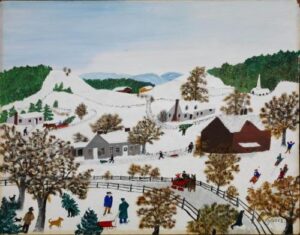 Christmas in America has a fascinating history, one that continues to brighten, create magic, inspire, deepen our lives. The tradition of sending CHRISTMAS CARDS, communicating and sharing the joy and wonder of it all, is a natural expression of that expansive spirit of the season. It falls on the calendar around the Winter Solstice when the ancient world celebrated the advent of longer days and the eventual return of spring. Above all, it is Christianity’s most significant observance, a celebration of the birth of Jesus, the man whose life represents the ideals and fundamental values of our Judeo-Christian civilization. One aspect of Christmas’ beauty is that one needn’t be specifically “Christian” to appreciate these ideals and values. It was a Jew, our Songwriter Laureate Irving Berlin, who wrote the Great American Christmas Carol in 1942 as WWII raged; and his “White Christmas” is perhaps the moment on our cultural time line that Christmas became a secular celebration as well as a religious one to be enjoyed by all Americans.
Christmas in America has a fascinating history, one that continues to brighten, create magic, inspire, deepen our lives. The tradition of sending CHRISTMAS CARDS, communicating and sharing the joy and wonder of it all, is a natural expression of that expansive spirit of the season. It falls on the calendar around the Winter Solstice when the ancient world celebrated the advent of longer days and the eventual return of spring. Above all, it is Christianity’s most significant observance, a celebration of the birth of Jesus, the man whose life represents the ideals and fundamental values of our Judeo-Christian civilization. One aspect of Christmas’ beauty is that one needn’t be specifically “Christian” to appreciate these ideals and values. It was a Jew, our Songwriter Laureate Irving Berlin, who wrote the Great American Christmas Carol in 1942 as WWII raged; and his “White Christmas” is perhaps the moment on our cultural time line that Christmas became a secular celebration as well as a religious one to be enjoyed by all Americans.
Among the highlights of Christmas and its beloved traditions, as chronicled by William Federer:
-
First nativity scene – In 1233, St. Francis of Assisi was concerned about the emphasis being placed on gift giving during the Christmas season. In order to redirect people’s attention back to the birth of Christ St. Francis created the first nativity scene.
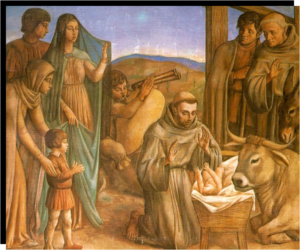
 “Twas the Night Before Christmas” poem – In 1823, Clement Moore, a young Episcopal priest and Hebrew professor at a theological seminary, wrote an imaginative poem for his family entitled “A Visit from St. Nicholas.” This is the first author to mention St. Nicholas in a sled being pulled by reindeer. Today this poetic classic is known as “Twas the Night Before Christmas.”
“Twas the Night Before Christmas” poem – In 1823, Clement Moore, a young Episcopal priest and Hebrew professor at a theological seminary, wrote an imaginative poem for his family entitled “A Visit from St. Nicholas.” This is the first author to mention St. Nicholas in a sled being pulled by reindeer. Today this poetic classic is known as “Twas the Night Before Christmas.”
- Christmas stockings – In 1623, Dutch immigrants brought their Christmas traditions to New Amsterdam (later renamed New York) where they hung stockings on the chimney on St. Nicholas Eve. In the morning, the stockings were always filled with gifts for the children. The name “St. Nicholas” evolved from the Dutch “Sant Niklass” to “Sinter Klaas” to “Santa Claus.”

 Christmas tree lights – In 1520, Martin Luther was walking home on Christmas Eve. The sky was illuminated with stars. When he returned home, he set up an evergreen tree and placed numerous small candles on its branches. He used the tree to tell his children the true meaning of the Christ Child, the Light of the World, whose birth had brightened the sky of the first Christmas Eve.
Christmas tree lights – In 1520, Martin Luther was walking home on Christmas Eve. The sky was illuminated with stars. When he returned home, he set up an evergreen tree and placed numerous small candles on its branches. He used the tree to tell his children the true meaning of the Christ Child, the Light of the World, whose birth had brightened the sky of the first Christmas Eve.
-
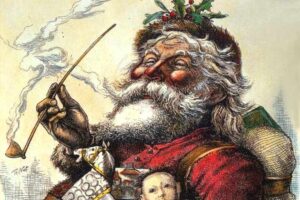 Santa Claus Image -Thomas Nast, the American political cartoonist responsible for creating the Democratic “Mule” and the Republican “Elephant” sketched his first drawings of Santa Claus for Harper’s Weekly Magazine in 1862. Over the next 22 years Nast would publish over 30 cartoons depicting Santa Claus as a jolly, plump man with an outgoing personality. In his final series of cartoons he was asked to do them in color. This was the first time Santa Claus was featured with a red suit with white fur trim.
Santa Claus Image -Thomas Nast, the American political cartoonist responsible for creating the Democratic “Mule” and the Republican “Elephant” sketched his first drawings of Santa Claus for Harper’s Weekly Magazine in 1862. Over the next 22 years Nast would publish over 30 cartoons depicting Santa Claus as a jolly, plump man with an outgoing personality. In his final series of cartoons he was asked to do them in color. This was the first time Santa Claus was featured with a red suit with white fur trim.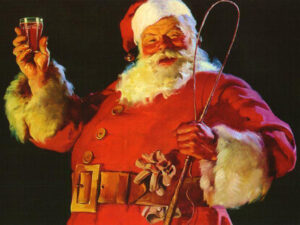
In the 1930’s, Chicago artist, Haddon Sundblom, was contacted by the Coca Cola Company to illustrate Santa Claus for their advertising campaign. For 33 years, he portrayed Santa Claus with ruby red lips, blue eyes, and a ruddy complexion. The new Santa took America by storm as the invention of the television and other media helped to market the image of Santa to kids everywhere.
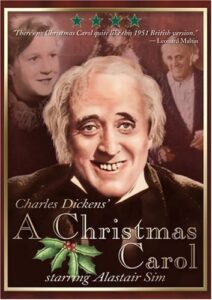 One can’t overlook the presence of writers Washington Irving and Charles Dickens as integral parts of our Christmases. Irving’s Sketchbook essays (1819) extolling the joys and spiritual significance of Christmas helped to popularize the holiday in America while Dickens’ “A Christmas Carol” (1843) remains the definitive story of the Christmas spirit’s power of redemption. The 1897 correspondence between 8 year old Virginia O’Hanlon and newspaper editor Francis Pharcellus Church answering the question “Is there a Santa Claus?” still puts to flight our most jaded cynicism about life’s challenging complexities.
One can’t overlook the presence of writers Washington Irving and Charles Dickens as integral parts of our Christmases. Irving’s Sketchbook essays (1819) extolling the joys and spiritual significance of Christmas helped to popularize the holiday in America while Dickens’ “A Christmas Carol” (1843) remains the definitive story of the Christmas spirit’s power of redemption. The 1897 correspondence between 8 year old Virginia O’Hanlon and newspaper editor Francis Pharcellus Church answering the question “Is there a Santa Claus?” still puts to flight our most jaded cynicism about life’s challenging complexities.
Scholars aplenty have opined on the pros and cons of Christmas in our lives: the timeless spiritual lessons exemplified by Jesus, the crass materialism of holiday commerce.
For the most fortunate among us, it is simply a special moment in the year that still retains life’s magic, infusing us with those often elusive, most precious human qualities: gratitude and optimism. Fully partaking of Christmas and its rich, historical legacy, people worldwide exult in singing the carols and popular songs, delight in the lights and festive decoration and look ahead hopefully to the best year yet.
Go directly to the CHRISTMAS CARDS at FREDGRAMS.com.
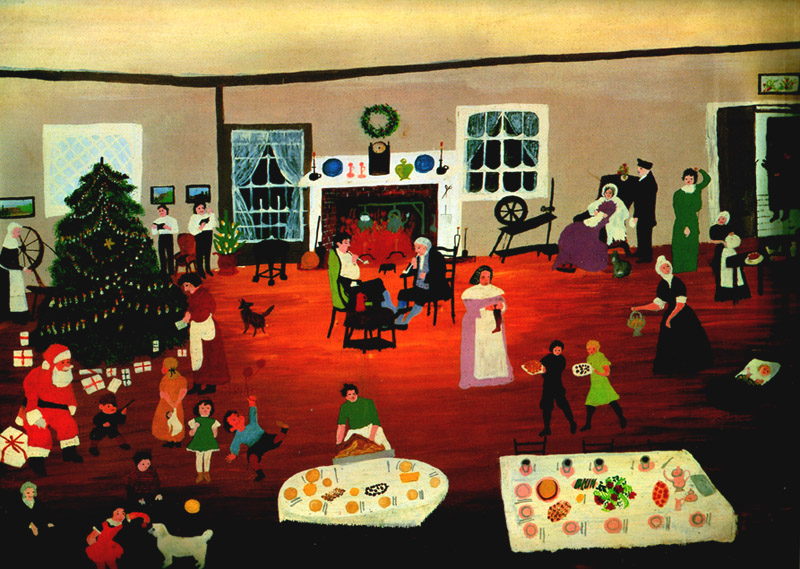
[…] Read a history of Christmas on this Blog. […]